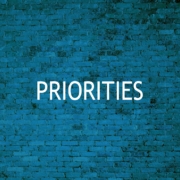Change your habits to grow your organization
We are creatures of habit. Some habits are helpful, but others… not so much.
I’ve met many leaders whose personal workplace habits hold their organization back. In most cases, the leader doesn’t realize that their habits are the root cause of breakdowns that result in unmet goals.
When leaders get better, the entire organization gets better.
Take CEO John, who has a habit of not responding to emails in a timely. Unfortunately, some of the unread emails contain important information about plans, projects, and goals. The staff gets frustrated because their boss doesn’t respond to their emails. When deadlines are missed and projects remain unfinished, John blames his staff. Sound familiar?
When we run into roadblocks like this, it’s worth asking ourselves if our daily habits play a role in the problem instead of automatically blaming others.
Nothing is more important than improving yourself as leader. Next time something isn’t going as planned, and ask yourself these three simple questions. Focus on your habits and consider how they affect others. As you answer these questions, be painfully honest with yourself and don’t consult anyone else.
- What is the problem?
- Why is this problem happening?
- What can or should I do differently to eliminate the problem from happening again?
As the saying goes, “When leaders get better, the entire organization gets better.” Changing your habits is a great place to start.
Sherri Miller, Founder and CEO
Center For Extraordinary Success
Email me Connect on LinkedIn










